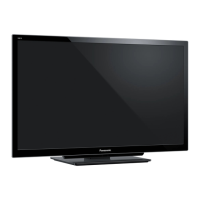
Do you have a question about the Panasonic VIERA TC-L37DT30 and is the answer not in the manual?
Ensure adequate space around the TV for ventilation to prevent overheating.
General safety guidelines for operating the TV set.
Specific grounding guidelines for CATV system installers.
Follow installation instructions and use shielded cables for continued compliance.
Equipment complies with FCC limits for uncontrolled environments, maintain 20cm distance.
Device compliance with FCC rules and IC rules.
List of included accessories like remote control, batteries, and owner's manual.
List of optional items like 3D eyewear, wireless LAN adapter, and wall mount.
Rechargeable 3D eyewear for viewing 3D content.
Camera for VIERA Connect, used for video communication.
Bracket for mounting the TV on a wall.
Instructions for attaching the pedestal to the TV and setup.
Guidance on optimal TV placement for viewing and ventilation.
Identifies and describes the various connection ports on the TV.
How to connect an antenna or cable service to the TV.
Visual guide to connecting antenna, pin, and HDMI terminals.
Details on connecting via HDMI, Component, and Composite for optimal signal quality.
How to connect audio equipment and PCs via various interfaces.
Overview of buttons and indicators on the front of the TV.
Detailed explanation of each button and its function on the remote control.
How to turn the TV on for the first time using the POWER button.
Select language, country, and viewing mode (Home use) during initial setup.
Choosing between Cable or Antenna signal input for channel scanning.
Choosing between auto program or manual program for channel tuning.
Naming connected devices for easier input selection.
Choosing between wired (Ethernet) or wireless (Wi-Fi) network connection.
Options for automatic or manual network configuration and connection testing.
Setting the TV's clock manually or automatically via network.
Information and precautions for using the wireless LAN adapter.
Steps for setting up a wireless network connection.
Methods for changing TV channels, including direct input.
Selecting different audio tracks available for digital channels.
Accessing the Sub Menu for convenient functions like favorites and signal meter.
Adding, calling up, and deleting channels from the Favorite list.
Methods for entering text using the remote or a USB keyboard.
Setting and entering a 4-digit password for channel or input locks.
Using a USB keyboard to control TV functions and enter data.
Accessing the VIERA TOOLS menu to launch special features.
Navigating through the VIERA TOOLS icons to choose a feature.
Configuring features like 3D, VIERA Connect, Media Player, and DLNA.
Accessing the menu to choose the active input source.
Choosing the desired input source from the list of connected devices.
Controlling external devices directly or via the TV remote.
Explains the components and function of the 3D eyewear.
Steps for wearing and operating the 3D eyewear correctly.
How 3D images are displayed automatically upon signal detection.
Instructions for attaching a ferrite core to the charging cable for noise reduction.
Step-by-step guide to charging the 3D eyewear using the TV's USB port.
Guidelines for safe and comfortable viewing of 3D images.
Recommendations for viewing distance and eye comfort.
Conditions and methods for watching 3D content.
Automatically switching between 3D and 2D display modes.
Manually selecting 3D format options like side-by-side or top-and-bottom.
Adjusting depth, signal notification, and other 3D image settings.
Overview of supported content types: photos, videos, and music.
Procedures for inserting/removing media and accessing content.
Inserting storage media and launching the Media player application.
Choosing the drive, media type, and specific files to view.
Playing back photos, videos, and music from selected media.
Setting up and starting a slideshow of photos.
Selecting music to play during the slideshow.
Accessing options to sort photos by folders, date, or month.
Creating 3D images from pairs of photos.
Overview of playback controls, movie banner, and subtitles.
Setting repeat playback options for videos.
Setting repeat playback options for music.
Adjusting picture, audio, 3D settings, and VIERA Link functions.
Functions enabled by HDAVI Control, like input switching and speaker control.
Necessary specifications for HDMI cables used with VIERA Link.
How to connect a Panasonic DVD recorder for VIERA Link control.
Connecting audio systems via HDMI or optical cable.
Connecting camcorders and digital cameras via HDMI.
Accessing the TV's main menu structure.
Navigating to the VIERA Link settings menu.
Configuring VIERA Link options like Power on/off link and energy saving.
TV automatically switches input based on playback of connected devices.
TV and connected equipment turn on/off together.
Accessing the VIERA Link menu.
Choosing VIERA Link control options like Recorder or Speaker output.
Enabling the VIERA Link function.
Choosing between TV or Home theater speakers for audio output.
Using the TV remote to control connected devices and select input.
Accessing internet services and applications via the VIERA Connect screen.
Sharing media content (photos, videos, music) over a home network.
Connecting and viewing images from a network camera.
Information on required internet speed for optimal service.
Choosing between wired or wireless connection based on modem proximity and number of TVs.
Options for wired (direct/router) and wireless internet connection.
Accessing the Network settings menu.
Configuring network connection type and testing the connection.
Setting up wired or wireless network connection and confirming status.
Configuring wireless network connection via search, WPS, or manual settings.
Setting IP/DNS acquisition to Automatic or Manual.
Configuring proxy settings if specified by the provider.
Registering and managing network cameras for viewing.
Checking for and installing TV software updates.
Accessing the VIERA Connect home screen to use internet services.
Navigating and selecting available internet services and apps.
Finding and selecting media from available DLNA servers.
Playing back photos, videos, and music shared via DLNA.
Accessing the VIERA Link menu to set up the network camera.
Selecting the network camera option within the VIERA Link menu.
Displaying network camera feeds in various screen layouts.
Configuring antenna or cable input settings.
Automatically scanning and adding channels.
Modifying channel captions, favorite status, and adding/skipping channels.
Checking signal strength for troubleshooting picture issues.
Accessing the TV's main menu structure.
Choosing from main menu categories like Picture, Audio, Setup.
Adjusting settings within selected menus, like picture quality.
Detailed settings for picture mode, backlight, contrast, brightness, color, and sharpness.
Changing screen format, HD size, and H size for optimal display.
Settings for sync, resolution, and HDMI configuration for PC input.
Settings for bass, treble, balance, surround sound, and volume leveling.
Setting timers for automatic TV turn-on and turn-off.
Setting parental controls to lock channels, programs, or VIERA Connect access.
Displaying text captions for audio content.
Settings to reduce power consumption and enable auto-off features.
Includes Auto power on, image viewer autoplay, and VIERA Connect banner settings.
Details on MPAA, US TV, and Canadian rating systems for parental control.
How to cycle through and select aspect ratio modes for optimal viewing.
Adjusting vertical position and size for the ZOOM aspect ratio.
Important warnings and precautions for using SD cards with the TV.
Common messages related to media device usage and their meanings.
Connecting high-definition digital devices via HDMI for optimal quality.
Connecting audio equipment for surround sound output.
Information on how Closed Captioning works and its display requirements.
Pin layout and signal names for the PC input connector.
Table detailing compatible horizontal and vertical scanning frequencies for display.
Guidelines for cleaning the display panel, cabinet, pedestal, and 3D eyewear.
Procedures for safely removing and disposing of the 3D eyewear battery.
Troubleshooting common picture problems like no picture, snowy screen, or black bars.
Troubleshooting common sound problems like no sound or distorted audio.
Troubleshooting common sound problems like no sound or distorted audio.
Addressing issues like clicking sounds, warm screen, and remote control problems.
Troubleshooting network connection and VIERA Connect setup.
Troubleshooting 3D video sources, eyewear power, and image phase issues.
Addressing problems with 3D eyewear battery charging or operation time.
Electrical specifications including power source, consumption, and standby condition.
Details of input/output terminals like HDMI, Component, and PC.
Physical dimensions and weight of the TV with and without stand.
Technical details of the 3D eyewear lens, battery, and viewing range.
Details on the wireless LAN adapter's interface, compliance, and transmission system.
Information on software licenses, including GNU LGPL and Microsoft WM-DRM.
Details on warranty period, parts, labor, and service options.
Exclusions and limitations of the warranty coverage.
Contact information for product support, parts, and accessories.
How to purchase parts and accessories online or via mail.
Warranty terms for Panasonic products in Canada, including service options.
Exclusions and limitations of the Canadian warranty coverage.
Physical dimensions of the TV, including with and without stand.
Diagrams showing the location of all input/output jacks on the TV.
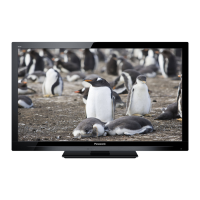
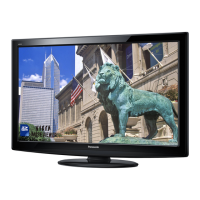
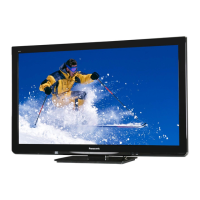

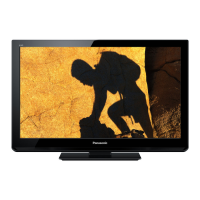
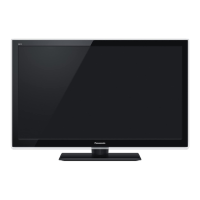
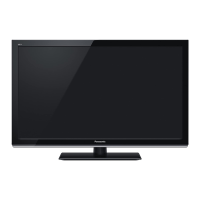
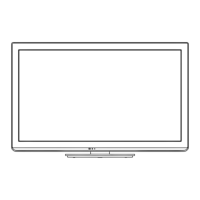
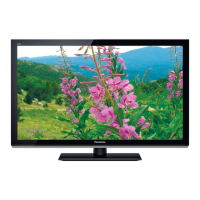
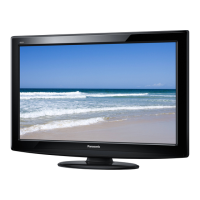


